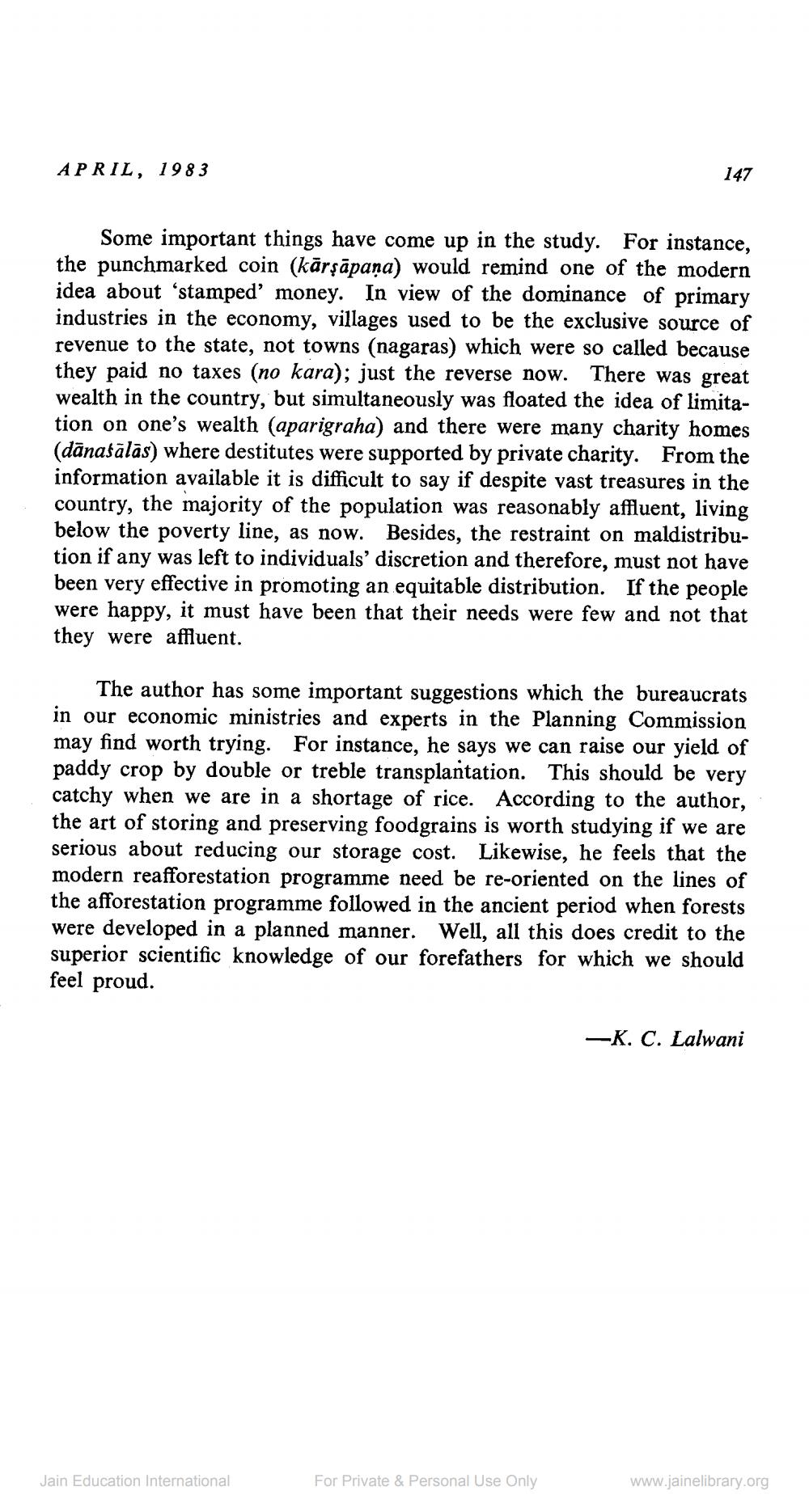________________
APRIL, 1983
Some important things have come up in the study. For instance, the punchmarked coin (kārṣāpaṇa) would remind one of the modern idea about 'stamped' money. In view of the dominance of primary industries in the economy, villages used to be the exclusive source of revenue to the state, not towns (nagaras) which were so called because they paid no taxes (no kara); just the reverse now. There was great wealth in the country, but simultaneously was floated the idea of limitation on one's wealth (aparigraha) and there were many charity homes (dānasālās) where destitutes were supported by private charity. From the information available it is difficult to say if despite vast treasures in the country, the majority of the population was reasonably affluent, living below the poverty line, as now. Besides, the restraint on maldistribution if any was left to individuals' discretion and therefore, must not have been very effective in promoting an equitable distribution. If the people were happy, it must have been that their needs were few and not that they were affluent.
147
The author has some important suggestions which the bureaucrats in our economic ministries and experts in the Planning Commission may find worth trying. For instance, he says we can raise our yield of paddy crop by double or treble transplantation. This should be very catchy when we are in a shortage of rice. According to the author, the art of storing and preserving foodgrains is worth studying if we are serious about reducing our storage cost. Likewise, he feels that the modern reafforestation programme need be re-oriented on the lines of the afforestation programme followed in the ancient period when forests were developed in a planned manner. Well, all this does credit to the superior scientific knowledge of our forefathers for which we should feel proud.
Jain Education International
For Private & Personal Use Only
-K. C. Lalwani
www.jainelibrary.org




